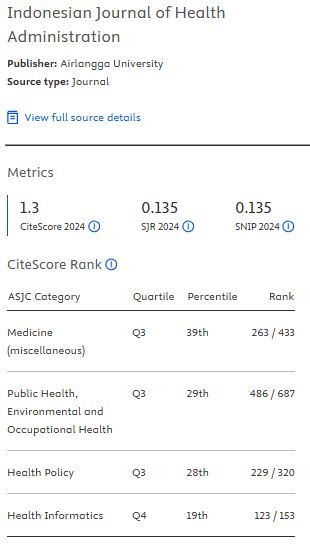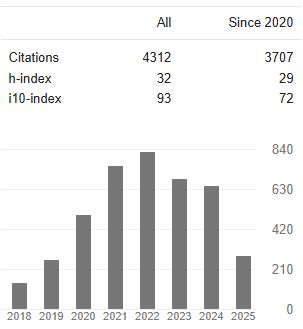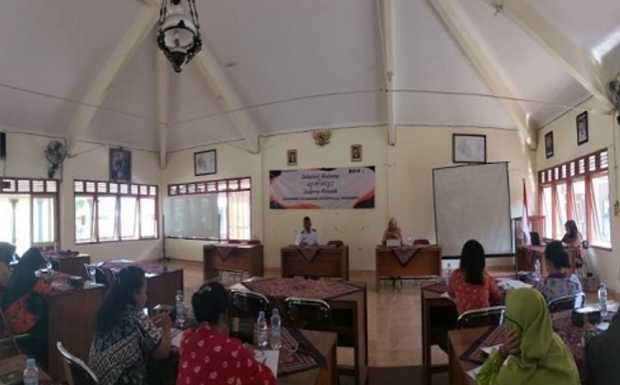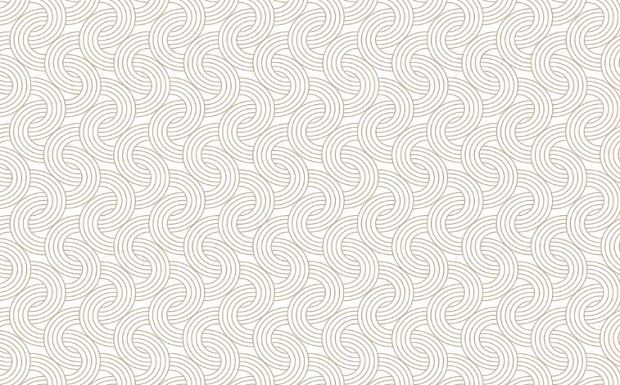INVENTORY CONTROL OF DISPOSABLE MEDICAL MATERIALS AT THE BALI MANDARA EYE HOSPITAL
Downloads
Background: As a health service institution, hospitals have characteristics and management complexities which have an impact on their financing aspects. Controlling the supply of pharmaceutical supplies aims to create a balance between supply and demand in order to realize effective and efficient health services.
Aims: This study aimed to design a method for controlling the optimal supply of disposable medical materials at the Bali Mandara Eye Hospital, Bali.
Methods: This is a qualitative study based on in-depth interviews with three informants, and involving 11 doctors (users) to determine the critical value of disposable medical materials.
Results: ABC analysis was used to classify all types of goods based on their importance to determine priorities based on the value of use. The budget allocation was dominated by only a small portion or only a few types of pharmaceutical supplies. The results show that there was a decrease in the total cost of inventory by 19.14% after the application of the EOQ method. The application of the reorder point (ROP) method can anticipate the occurrence of stock outs or vacancies.
Conclusion: The EOQ method is more efficient than the conventional method applied at the Bali Mandara Eye Hospital Pharmacy Installation. The EOQ and ROP methods greatly affect the efficiency and effectiveness of controlling the inventory of medical disposable materials at the Bali Mandara Eye Hospital.
Keywords: : inventory control, effective and efficient, medical disposable materials
Akhmad. (2018). Manajemen Operasi Teori dan Aplikasi dalam Dunia Bisnis. Yogyakarta: ANDI Offset.
Ballou, R. H. (2004). Business Logistics/supply Chain Management: Planning, Organizing, and Controlling the Supply Chain. New Jersey: Pearson Prentice Hall.
Buffa, F. P. (1986). Restocking Inventory in Groups: A Transport Inventory Case. International Journal of Physical Distribution & Materials Management, 16(3), 29–44. https://doi.org/10.1108/eb014632
Chang, Y. T., Lee, S. Y., and Tongzon, J. L. (2008). Port selection factors by shipping lines: Different perspectives between trunk liners and feeder service providers. Maritime Policy and Management, 32(1), 877–885. https://doi.org/10.1016/j.marpol.2008.01.003
Dewi, E. K., Dahlui, M., Chalidyanto, D., and Rochmah, T. N. (2020). Achieving cost-efficient management of drug supply via economic order quantity and minimum-maximum stock level. Expert Review of Pharmacoeconomics and Outcomes Research, 20(3), 289–294. https://doi.org/10.1080/14737167.2019.1633308
Essam Eissa, M., Ei̇ssa, M., and Rashed, E. (2020). Application of statistical process optimization tools in inventory management of goods quality: Suppliers evaluation in healthcare facility. Journal of Turkish Operations Management, 4(1), 388–408.
Ercis, E., Widodo, G. P. (2013). Analisis Pengendalian Obat Sitostatika Dengan Metode Eoq Dan Rop. Analisis Pengendalian Obat Sitostatika Dengan Metode Eoq Dan Rop. Jurnal Manajemen Dan Pelayanan Farmasi (Journal of Management and Pharmacy Practice), 3(3), 203–210. https://doi.org/10.22146/jmpf.194
Fan, L., Wilson, W. W., and Tolliver, D. (2009). Logistical rivalries and port competition for container flows to US markets: Impacts of changes in Canada's logistics system and expansion of the Panama Canal. Maritime Economics and Logistics, 11(4), 327–357. https://doi.org/10.1057/mel.2009.15
Gurumurthy, A., Nair, V. K., and Vinodh, S. (2020). Application of a hybrid selective inventory control technique in a hospital: a precursor for inventory reduction through lean thinking. TQM Journal, ahead-of-p(ahead-of-print). https://doi.org/10.1108/TQM-06-2020-0123
Hales, D. N., Chang, Y. T., Lam, J. S. L., Desplebin, O., Dholakia, N., and Al-Wugayan, A. (2017). An empirical test of the balanced theory of port competitiveness. International Journal of Logistics Management, 28(2), 363–378. https://doi.org/10.1108/IJLM-06-2015-0101
Hartih, N. A., Satibi, and Widodo, G. P. (2013). Penerapan Metode Economic Order Quantity Dan Reorder Point Dalam Meningkatkan Efisiensi Persediaan Obat Reguler Di Instalasi Farmasi Rumah Sakit. Jurnal Manajemen Dan Pelayanan Farmasi (Journal of Management and Pharmacy Practice), 3, 249–254.
Heizer, J., Render, B., and Munson, C. (2017). Principles of Operations Management; Sustainability and Suply Chain Management. In Principles of Operations Management.
Kementerian Kesehatan RI Farmalkes. (2020). Pedoman Penyusunan Rancangan Kebutuhan Obat dan Pengendalian Persediaan Obat di Rumah Sakit. Retrieved from https://farmalkes.kemkes.go.id/2020/01/pedoman-penyusunan-rancangan-kebutuhan-obat-dan-pengendalian-persediaan-obat-di-rumah-sakit/
Lai, S., Lin, Y., Luo, J., Li, X., and Li, S. (2021). Informationization Design of Field Standardized Operation Management System for Medium and Low Voltage Distribution Network. Journal of Physics: Conference Series, 1915(4), 42093. https://doi.org/10.1088/1742-6596/1915/4/042093
Minken, H., and Johansen, B. G. (2019). A logistics cost function with explicit transport costs. Economics of Transportation, 19(1), 100–116. https://doi.org/10.1016/j.ecotra.2019.04.001
Octaviany, M. (2018). Analisis Pengendalian Persediaan Obat Antibiotik Di Rs Meilia Pada Tahun 2014 Dengan Menggunakan Metode Analisis Abc Indeks Kritis. Jurnal Administrasi Rumah Sakit Indonesia, 4, 147–160.
Rochmah, T. N. (2019). Menilik Manajemen Persediaan Obat di Rumah Sakit. UNAIR News. Retrieved from http://news.unair.ac.id/2019/09/24/menilik-manajemen-persediaan-obat-di-rumah-sakit/
Satibi. (2014). Manajemen Obat di Rumah Sakit. Yogyakarta: UGM Press.
Tongzon, J., Chang, Y. T., and Lee, S. Y. (2009). How supply chain oriented is the port sector? International Journal of Production Economics, 122(1), 21–34. https://doi.org/10.1016/j.ijpe.2009.03.017
Ugboma, C., Ugboma, O., and Ogwude, I. C. (2006). An Analytic Hierarchy Process (AHP) Approach to Port Selection Decisions – Empirical Evidence from Nigerian Ports. Maritime Economics and Logistics, 8, 251–266. https://doi.org/10.1057/palgrave.mel.9100160
World Health Organization. (2014). GOOD GOVERNANCE IN THE PHARMACEUTICAL SECTOR. Retrieved from https://www.who.int/medicines/areas/governance/ggm_tunis_meeting_report.pdf?ua=1
Copyright (c) 2021 Ni Wayan Yuli Yudianti, Putu Nina Eka Lestari, Gde Sri Darma, IB Raka Suardana

This work is licensed under a Creative Commons Attribution-ShareAlike 4.0 International License.
1. As an author you (or your employer or institution) may do the following:
- make copies (print or electronic) of the article for your own personal use, including for your own classroom teaching use;
- make copies and distribute such copies (including through e-mail) of the article to research colleagues, for the personal use by such colleagues (but not commercially or systematically, e.g. via an e-mail list or list server);
- present the article at a meeting or conference and to distribute copies of the article to the delegates attending such meeting;
- for your employer, if the article is a ‘work for hire', made within the scope of your employment, your employer may use all or part of the information in the article for other intra-company use (e.g. training);
- retain patent and trademark rights and rights to any process, procedure, or article of manufacture described in the article;
- include the article in full or in part in a thesis or dissertation (provided that this is not to be published commercially);
- use the article or any part thereof in a printed compilation of your works, such as collected writings or lecture notes (subsequent to publication of the article in the journal); and prepare other derivative works, to extend the article into book-length form, or to otherwise re-use portions or excerpts in other works, with full acknowledgement of its original publication in the journal;
- may reproduce or authorize others to reproduce the article, material extracted from the article, or derivative works for the author's personal use or for company use, provided that the source and the copyright notice are indicated.
All copies, print or electronic, or other use of the paper or article must include the appropriate bibliographic citation for the article's publication in the journal.
2. Requests from third parties
Although authors are permitted to re-use all or portions of the article in other works, this does not include granting third-party requests for reprinting, republishing, or other types of re-use.
3. Author Online Use
- Personal Servers. Authors and/or their employers shall have the right to post the accepted version of articles pre-print version of the article, or revised personal version of the final text of the article (to reflect changes made in the peer review and editing process) on their own personal servers or the servers of their institutions or employers without permission from JAKI;
- Classroom or Internal Training Use. An author is expressly permitted to post any portion of the accepted version of his/her own articles on the author's personal web site or the servers of the author's institution or company in connection with the author's teaching, training, or work responsibilities, provided that the appropriate copyright, credit, and reuse notices appear prominently with the posted material. Examples of permitted uses are lecture materials, course packs, e-reserves, conference presentations, or in-house training courses;























